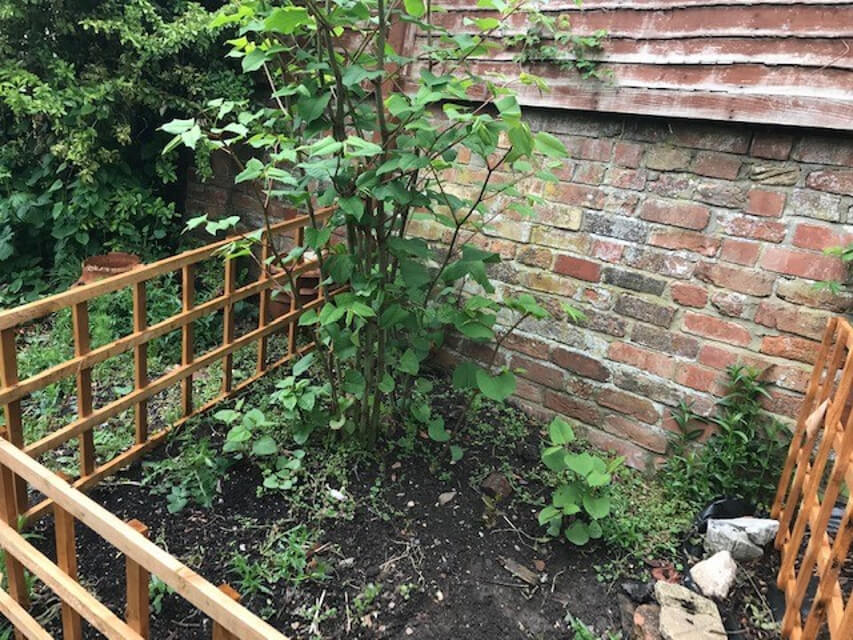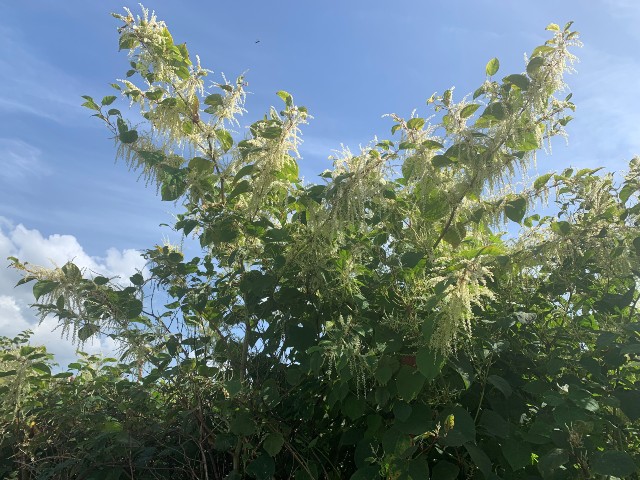
Japanese Knotweed can be a tricky plant to identify due to the fact its appearance changes throughout the year. It can also look quite similar to other plants like Bindweed, Russian Vine, Bamboo and Broadleaf Dock.
Fortunately, there are a few defining features of Japanese Knotweed to look out for. If you need help identifying Japanese Knotweed, read our handy Japanese Knotweed identification guide.
Japanese Knotweed Identification: A Seasonal Guide
Spring
Throughout the spring, Japanese knotweed begins regrowing after the winter months. From around mid-March, you can expect to see red and purple shoots surfacing, which will quickly begin to grow leaves. The root (rhizome) remains bright orange on the inside and dark brown on the outside all year round.
- Leaves – Purplish in colour and tightly curled
- Stems – Red/purple colour, small, very thin, malleable, and grow in an iconic zig-zag pattern
- Flowers – No flowers until the summer months
Summer
During the height of summer, Japanese knotweed is thriving. Towards the end of spring, the leaves start to unfurl and change to a bright green colour. The summer months are probably the easiest time to identify Japanese knotweed. It’s also the best time to treat it.
- Leaves – Heart-shaped and bright green with red veins
- Stems – Dense, hollow and wood-like
- Flowers – Clusters of tiny, creamy white flowers

Autumn
As with most plants, as the summer ends, Japanese knotweed begins to change colour and its leaves begin to wilt and fall.
- Leaves – Yellowy gold
- Stems – Faded darker brown colour
- Flowers – Clusters of tiny, creamy white flowers
Winter
Japanese knotweed becomes less colourful and vibrant during the winter. Now brown and bare, the weed begins to die back.
- Leaves – All its leaves will have died and fallen towards the end of autumn
- Stems – Brown and wood-like
- Flowers – All flowers have completely died away
What to do if you suspect Japanese knotweed
If you think you’ve identified Japanese knotweed on or near your property, get in touch with us today to organise a treatment plan. If you’re still unsure if it’s Japanese knotweed you can send us a photo and we will get back to you with a definitive verdict.
Identify Japanese knotweed with a photo
